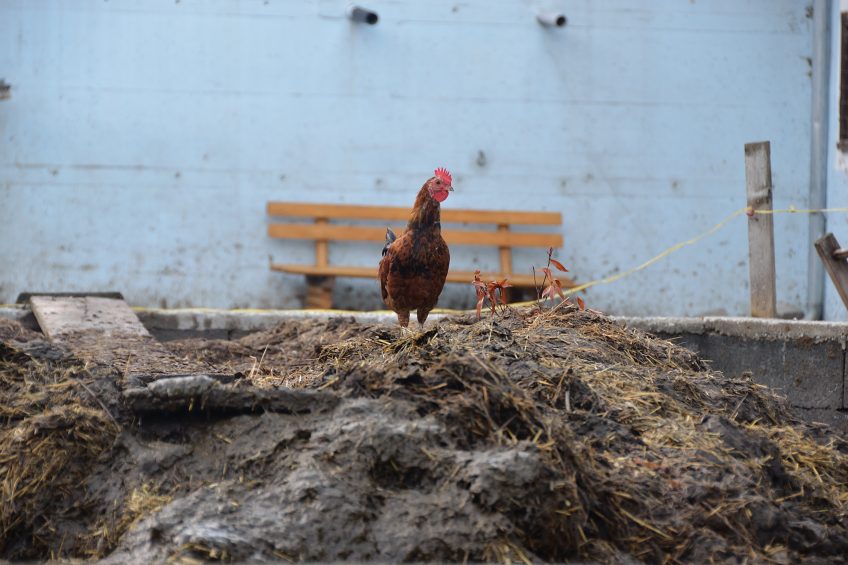Greenpeace claim CAP is promoting pollution from poultry farms

Intensive poultry farms have come under criticism for high levels of ammonia from campaign group Greenpeace, which claims the Common Agricultural Policy is promoting pollution.
Although the poultry sector receives far less subsidy than other agricultural sectors, Greenpeace claims the CAP is failing to improve one of its stated objectives – to improve the environment.
Greenpeace brought together a team of investigative and data journalists across 8 European countries – Austria, Belgium, Denmark, France, Germany, Italy, Poland and the Netherlands – to examine whether there was a link between CAP subsidies and he environmental impacts of industrial livestock installations.
They found that only 1 pollutant, ammonia, is consistently reported in the European Pollutant Release and Transfer Register (E-PRTR) – but only farms raising more than 40,000 chickens, 2,000 pigs or 750 sows are required to submit data to the register.
The majority of ammonia pollution stems from livestock farming and in 2015 the EU agricultural sector emitted a total of 3.75m tonnes of ammonia, making up 94% of the EU’s total ammonia emissions. Ammonia runoff from fertiliser or manure slurry can cause eutrophication of rivers, lakes and seas and it can also affect air quality, worsening the impact of fine particulate matter.
Of the 2,347 examined livestock farms emitting high levels of ammonia and registered in the E-PRTR, 51% of them (1,209 received CAP payments totalling €104m, including environmental subsidies).
The report looked at results from a range of countries:
Belgium
A total of 64 pig and poultry farms were listed in the E-PRTR in 2015, emitting a total of 1,311.8 tonnes of ammonia. Researchers identified 42 livestock farms (30 pig and 12 poultry) of which 35 received CAP subsidies in 2016 amounting to €1.29m.
Denmark
Researchers found that 98.6% of Danish ammonia emissions from farming is not recorded in the E-PRTR because of the high threshold level. They were able to match 59 of 69 farms that were registered as recipients of CAP funding totalling €8m including 2.41m earmarked for environmental protection.
France
Although France is the second largest poultry producer in the EU, there are only 727 companies in the E-PRTR, while around 31,000 farms are known to be producing poultry, pigs, geese and ducks. Of these, 436 received CAP funding in 2015 with 60 farms receiving over €65,300 each, putting them in the top 10% of CAP recipients.
Germany
There were 174 poultry farms in the German E-PRTR out of a total of 603 animal production facilities. Around 5 of the 603 farms received EU grant support with the top 6% of farms getting more than €1.1m each.
Poland
The E-PRTR listed 123 livestock farms in the country in 2015, including 87 poultry farms but journalists found at the end of 2014 783 livestock farms were also large enough to meet the requirements set by the IPPC/IED rules for industrial emissions, a size that should make many of them eligible for inclusion in the E-PRTR.
Netherlands
In Holland, only 49 out of 34,000 livestock farms have reported their pollution to the E-PRTR in 2015. Researchers found that, since 2003, there has been a substantial increase in the number of intensive livestock farms in the Netherlands, from 300 to over 800. In 2015 the Dutch government passed a law to reduce ammonia pollution, which forbade the construction of new megafarms (more than 120,000 chickens). But the legislation left a significant loophole since existing farms were still allowed to expand into intensive livestock installations. As a consequence, 47 more intensive sites appeared in the countryside.
Greenpeace urged EU institutions and member states to:
- Establish a complete and regularly updated database of farm emissions of ammonia, starting from a value of 1,000 kg per year
- Ensure that the CAP specifically contributes to reducing ammonia emissions by a) encouraging the reduction in the number of animals raised, particularly in regions already intensively farmed; b) encouraging the extensive systems favouring outdoor grazing and c) incentivising the adoption of better housing systems that both improve animal welfare and lower emissions of pollutants, ensuring covered outdoor space for animals and effective manure management
- Ensure a tight implementation of the Nitrates Directive at national level, promoting the adoption of manure management technologies that minimise ammonia emissions, such as by limiting the time between manure applications and tilling
- Ensure that all farms have a complete “nutrient balance sheet”, taking stock of how much feed, manure and any other nutrients enter and leave the farm
- Make the CAP payments fully transparent and freely accessible to the public.












